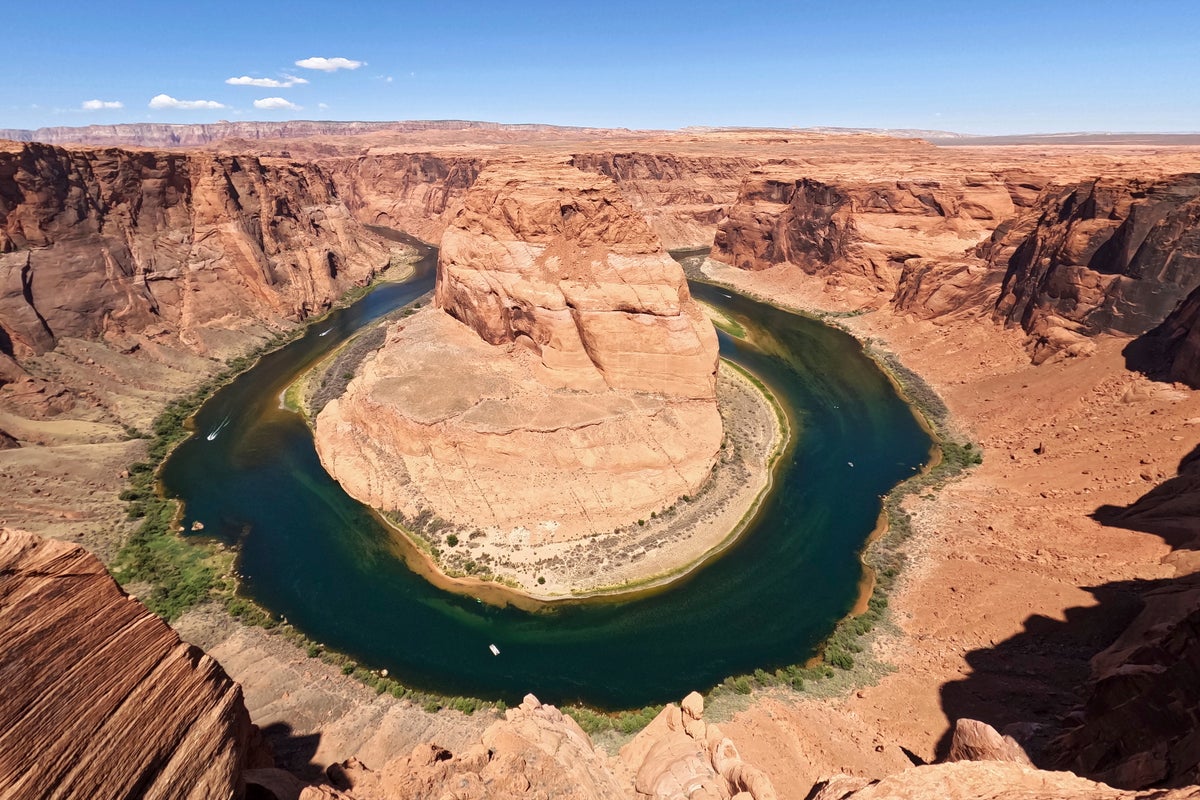
The US government has stepped in to protect the drought-ravaged Colorado River system after talks fell apart among western states on how to cut back on water use.
The American West is in the grips of a two-decade “megadrought” linked to the climate crisis, and higher temperatures have reduced the snowpack, meaning less runoff into big bodies of water.
Camille Touton, Commissioner of the Bureau of Reclamation which manages water and power, said during a press briefing on Tuesday that the Colorado River system is approaching a “tipping point”. Its largest reservoirs, Lake Mead and Lake Powell, are at historic lows with combined 28 per cent capacity.
“Our mission is to protect the system which means protecting people of the American West,” she said.
The US government announced a first-ever Tier 2 water shortage on the Colorado River meaning some states will need to make new mandatory cuts to water use.
Arizona, Nevada and Mexico, which also draws from the Colorado, will need to make further reductions from January, for the second-year running. Arizona is facing the biggest cuts at 21 per cent of its water allocation. Nevada faces an 8 per cent reduction and Mexico is to make a 7 per cent cut.
California, which is also in the Colorado River’s lower basin, will not yet have to make additional cuts.
Water officials in the seven basin states - Arizona, California, Colorado, Nevada, New Mexico, Utah and Wyoming - failed to reach agreement by Monday’s deadline after three months of talks on how they should divide dwindling supplies.
The states are all part of the 1922 Colorado River Compact - which was created at a time when the water supply was far great than it is now.
The talks appeared to have descended into bitter recriminations. A letter from John Entsminger, general manager of the Southern Nevada Water Authority, said that talks have “produced exactly nothing in terms of meaningful collective action to help forestall the looming crisis”, The Hill reported on Monday night.
Mr Entsminger’s letter accused agricultural districts of “drought profiteering” and said shareholders held “unreasonable expectations”.
“Through our collective inaction, the federal government, the basin states and every water user on the Colorado River is complicit in allowing the situation to reach this point,” he wrote, according to The Hill.
Comissioner Touton told reporters on Tuesday that “to date, the states have not identified solutions to stabilize the system” but that federal authorities hoped for “collaboration” and “partnership” going forward.
Tanya Trujillo, the Department of Interior’s assistant secretary for water and science, said that all sectors in every state has to reduce water use and be more efficient “to avoid a catastrophic collapse of the Colorado River System and a future of uncertainty and conflict”.
Some 40 million people rely on the Colorado River for water, along with Mexico, and it is crucial for the multi billion-dollar agricultural sector in the region.
In addition to the climate crisis impacts, poor planning has meant that more water has been pulled from the Colorado than can be replaced. Lake Mead dropped so low in 2021 that the US government declared a first-ever water shortage in the region.
Deputy Secretary of the Interior, Tommy Beaudreau, described the situation as “dire” and explained that more than 70 per cent of the western US is in severe drought.
“Everybody has to tight their belts in this situation,” he said. However he added that he was encouraged by “basin states coming to the table” to deal with the challenges. He also flagged the Bipartisan Infastructure Law, and the Inflation Reduction Act, which was signed by President Joe Biden on Tuesday, as critical to attacking the drought crisis.
“Will use every tool at the federal level to protect the Colorado River system,” he said.







